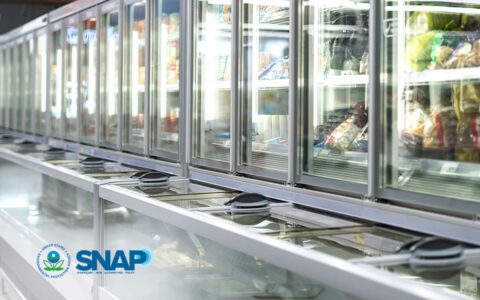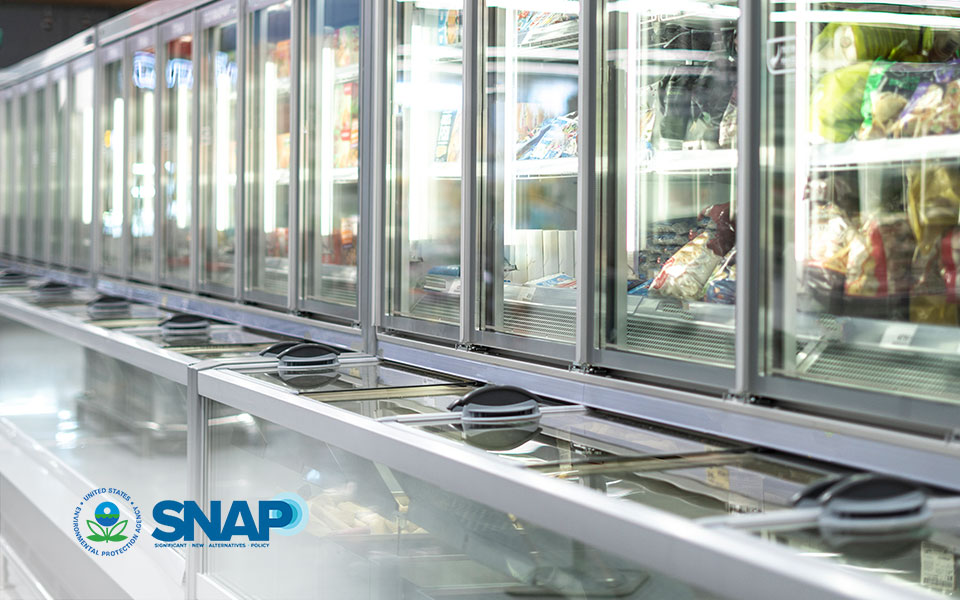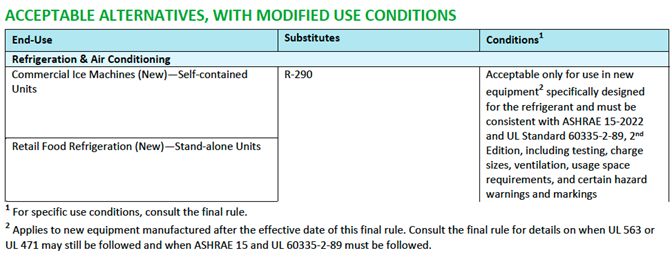EPA SNAP Rule 26 approves, modifies use conditions for A2L and A3 refrigerants

On May 28, the Environmental Protection Agency (EPA) pre-published its Significant New Alternatives Policy (SNAP) Rule 26, adding to the list of allowable refrigerants that can be used in commercial and industrial refrigeration sectors. The action lists nine new A2L refrigerant substitutes as “acceptable for use, subject to use conditions,” approves the A3 R-290 for use in food processing and dispensing equipment and modifies the use conditions for in stand-alone equipment. SNAP Rule 26 is the latest step in the EPA’s efforts to allow substitutes that enable the phasedown of high-global warming potential (GWP) hydrofluorocarbon (HFC) refrigerants in the HVACR industry.

Regulatory background
For many years, the EPA has worked to limit the supply of — and demand for — HFCs. As the HFC phasedown progresses along the timeline set by the Kigali Amendment to the Montreal Protocol, the EPA has focused its efforts on reducing demand. Under the authority of the American Innovation and Manufacturing Act (i.e., AIM Act) of 2020, the EPA published its Technology Transitions rule of 2023, which established sector-based GWP limits across the spectrum of HVACR equipment. SNAP Rule 26 lists substitutes with GWP limits that align with the EPA’s Technology Transitions rule, providing refrigerant guidance for specific commercial and industrial refrigeration end uses.
The SNAP program operates under Section 612 of the EPA’s Clean Air Act (CAA), with the goals of protecting the stratospheric ozone layer and reducing refrigerants’ contributions to global warming. SNAP follows a comparative risk framework to evaluate lower-GWP refrigerant substitutes. To be listed as “acceptable,” substitutes must be determined to “not present a significantly greater risk to human health and the environment as compared with other substitutes that are currently or potentially available.”
To make these determinations, SNAP 26 references the UL 60335-2-89, 2nd edition product safety and ASHRAE 15-2022 application standards. Thus, specific safety measures, charge limits and system design strategies are established within these standards.
Refrigerant listings and end uses
The approved A2L and A3 refrigerants come in various GWP ranges to provide a variety of options for commercial and industrial refrigeration end uses:
- Below 150 GWP: HFO-1234yf, HFO-1234ze(E), R-454C, R-455A, R-457A, R-516A, R-290
- Below 300 GWP: R-454A
- Below 700 GWP: R-454B, HFC-32
In alignment with the GWP limits established in the EPA’s Technology Transitions proposal, SNAP Rule 26 specifies which options can be used in each end use, subject to use conditions.

Table 1: New refrigerant listings per end use in SNAP Rule 26
SNAP 26 also includes modified use conditions for R-290 (3 GWP) in the design of new stand-alone equipment. Per UL 60335-2-89, 2nd edition, charge limits have been raised from 150 to 300–500g:
- 300g in closed appliances (with doors or drawers)
- 500g in open appliances (without doors)

Table 2: SNAP Rule 26 includes modified use conditions for R-290.
Building codes and local authorities having jurisdiction (AHJ)
Although EPA approval of mildly flammable A2L and flammable A3 refrigerants is now complete, the use of these refrigerants may still require building and/or model code updates and the permission of local AHJs. In recent years, the Air-Conditioning, Heating, and Refrigeration Institute (AHRI) has worked diligently with states to expedite building code updates. Currently, most states have completed this process relative to commercial refrigeration.
To check the status of your state’s building codes, please check AHRI’s interactive map.
Copeland can help you to comply with refrigerant regulations
Copeland is optimizing its compression technologies and associated electronic componentry for use with increased R-290 charge limits and the following approved A2Ls: R-455A (146 GWP), R-454C ( GWP) and R-454A (238 GWP) in refrigeration end uses. As end users and original equipment manufacturers (OEMs) seek compliance with the EPA’s Technology Transitions GWP limits, these substitutes can provide the options needed to balance their performance and sustainability goals across the full spectrum of HVACR equipment.
For example, in the retail food refrigeration sector, R-290, R-455A, R454C and R-454A all meet the 150–300 GWP limits across supermarket rack systems, remote condensing units and self-contained refrigeration equipment. All these end uses have compliance dates from 2025–2027, so be sure you’re informed and prepared for these imminent deadlines. See our Technology Transitions blog for compliance information about your specific end use or sector.
By combining industry-leading compression technology with leak detection sensors and supervisory control architectures, our A2L-optimized component portfolio reflects our commitments to A2L application safety, refrigeration reliability and sustainability.
To learn more about the dynamic regulations impacting HVACR, please visit Copeland’s content hub.

8 proven strategies for rigorous cold chain management
by Dan Knauer | Cold Chain
Preparing for the approval and safe use of A2Ls in commercial refrigeration applications...
Protection for high-value shipments just got even better
by Alex Axelsson | Cold Chain, Transportation
We’re excited to announce the release of Copeland’s newest real-time tracker, the GO Real-Time...

Three proven strategies to prevent cargo theft
by Chris Lafferty | Cold Chain, Transportation
The over-the-road (OTR) transport industry is experiencing a surge in cargo thefts. As thieves...
The post EPA SNAP Rule 26 Approves, Modifies Use Conditions for A2L and A3 Refrigerants appeared first on Copeland.